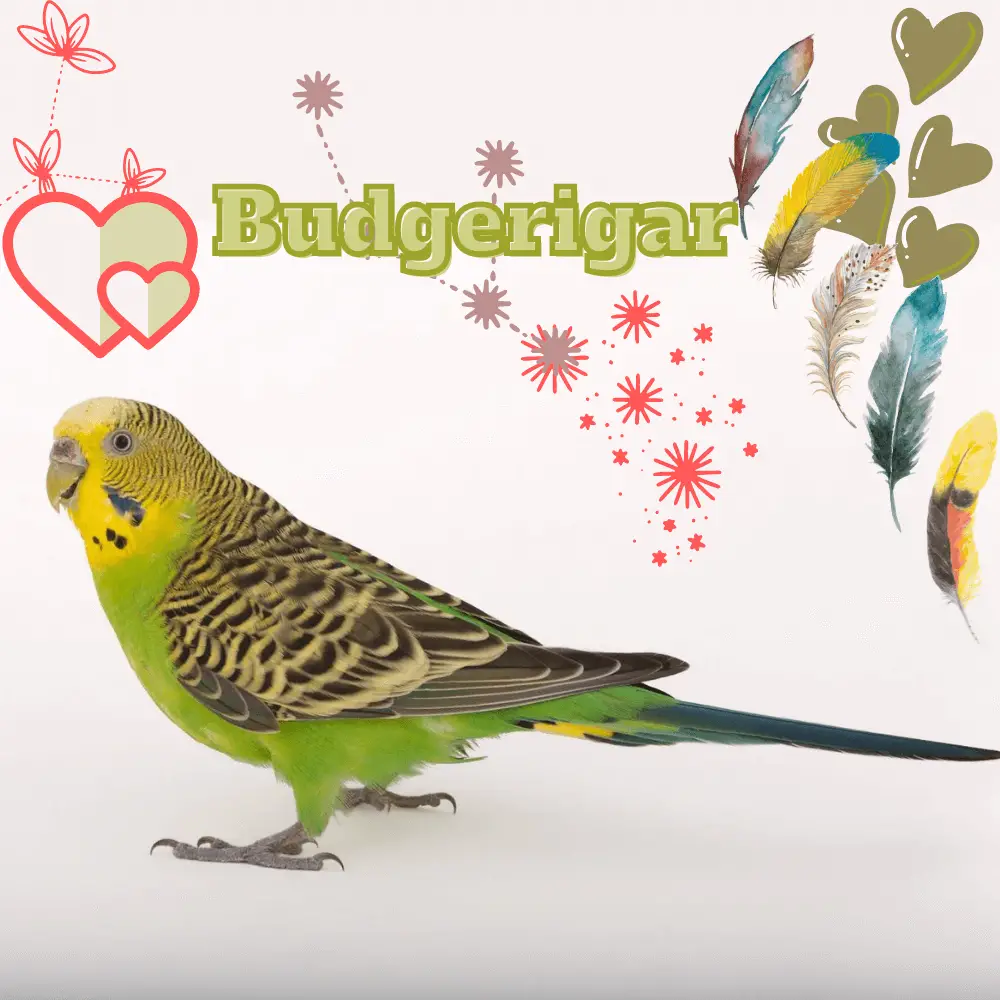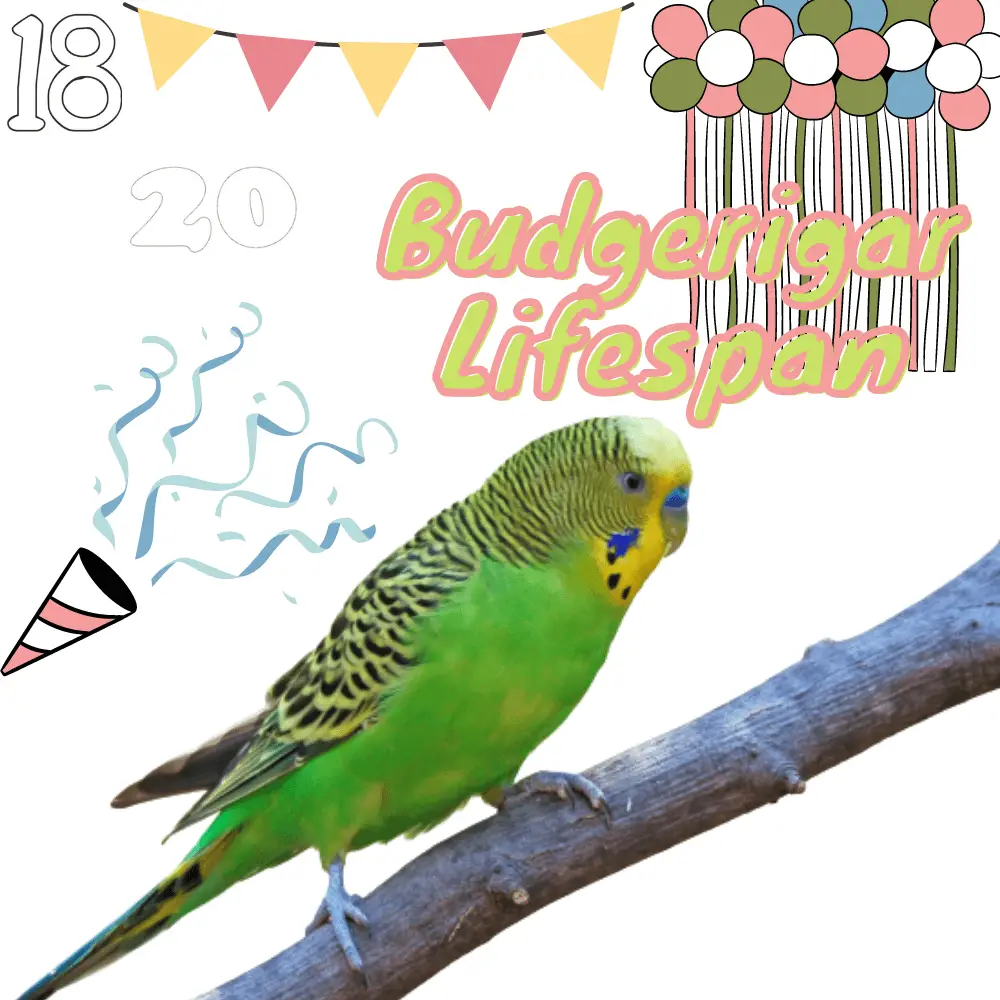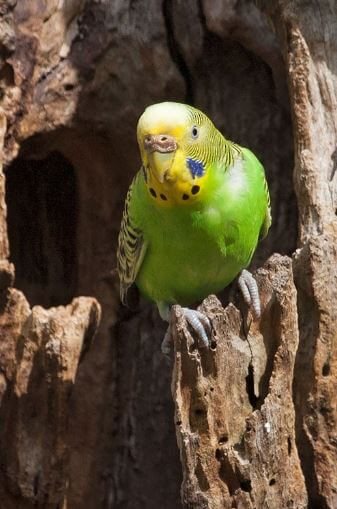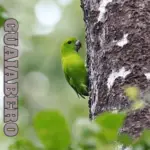
Budgerigar 17–18 cm; 26–29 g. Cere blue, forehead, front of the face, and throat pale yellow, last with a line of black spots;
lower malar area purple; mid-crown and the area below eye back to nape barred black and pale yellow, broadening to become scalloping on mantle and wing-coverts;
underparts, underwing-coverts, lower back, and rump light green; tail dull bluish, lateral feathers with a central yellow band. Budgerigar Female has brownish cere. Immature duller with barring on forehead and no black spots on throat.
Systematics History
Monotypic.
Subspecies
Monotypic.
Budgerigar Distribution
Australia is mainly away from coasts and absents from the Cape York Peninsula.
Budgerigar Habitat
Inhabits a wide variety of open habitats including open forest, savanna, lightly wooded grasslands, mallee, farmland, riparian growth, dry scrubland, and open plains, even penetrating mulga (Acacia aneura) deserts; although capable of surviving long periods without water, birds are rarely found far from a source.
Movement
In parts of range areas exist in which seasonal production of food is regular, and others where the supply is stable for extended periods, so some populations are relatively predictable on a seasonal basis; in far S of range birds only present Sept–Jan.
Elsewhere is fairly nomadic according to water and seeding grass. In times of drought, Budgerigars move wherever conditions are more favorable, but then may be confined to these refugees as the drought intensifies, only recolonizing old areas once rainfall permits it.
Budgerigars in the Wild
SOURCE: Plumes of Oz
Budgerigar Diet
Grass and chenopod seeds were taken on or near the ground, the number of species and proportions varying with season and part of the range.
In inland mid-eastern Australia birds were found to eat only seeds of ground vegetation, from 0·5 to 2·5 mm in length, with up to 39 species involved of Budgerigar;
at one site Astrebla spp. were dominant in the diet, while further inland a wider array was taken, including Boerhavia diffusa, Atriplex and Astrebla pectinata, in the hot months, with Iseilema important in the colder period. Occasionally attacks ripening grain crops.
Budgerigar Sounds
Quite noisy. Commonest Budgerigar calls a liquid pleasant-sounding “che-lee” and a short raspy dry “krrr” or “trrt”. In groups, the birds produce a constant mellow chattering with some raspy notes mixed in.
Budgerigar Talk
SOURCE: BBC Earth
Budgerigar Breeding
Jun–Sept in N of range, Aug–Jan in S, but any time of year after substantial rains, and where conditions permit there may be two breeding seasons in a particular year. Often communal.
Budgerigar Nest in a hollow in a tree, stump, fence post, or fallen limb. Eggs 4–6 (up to 8); incubation lasts c. 18 days; nestling period c. 30 days.
Budgerigar Lifespan

The lifespan of a budgerigar varies greatly depending on the species. It can even go from simple to double! Moreover, it also depends on the conditions in which it lives.
It is the budgerigar that has the shortest lifespan, with an average of 7 to 10 years, 12 years maximum. She is from Australia and is about 18 to 20 centimeters tall.
Budgerigar bird can have different colors depending on the mutations. We speak of “series” for the basic colors: green, blue, grey-green, and grey. Among the wavy parakeets, there are also the Lutino (yellow plumage) and Albino (white plumage) parakeets.
Budgerigar As Pets
The life expectancy of pet budgerigars depends on their living conditions. This mainly includes the emotional environment, habitat, food, and hygiene.
budgerigar in the wild, the parakeet is a budgerigar bird that lives in the community. For the well-being of these little birds, it is best to respect their natural instinct. Also, it is always recommended to adopt a couple of budgerigar parakeets rather than just one.
By taking care of your budgerigar, there is, a priori, little risk that they will be affected by a disease. The location of the cage or aviary is an important element.
Indeed, you will place it in a fairly bright room, with a source of natural light, but without exposing it to direct sunlight. It will also be protected from drafts.
In addition, the cage must be subject to good hygiene, with very regular cleaning, as well as its accessories. This way, you will keep away bacteria or other parasites that could develop there. Our stores offer you several maintenance products for the environment of birds (naturally safe for animals).
Budgerigar Cage
your little feathered budgerigar parakeets will thrive in a large cage, where it will be possible for them to fly. Even if you let them out once a day, they will need space in their cage. For example, you will find in our stores the NEO JILI cage for a couple of budgies, cockatiels, lovebirds, or kakarikis.
The cage alone is naturally not enough, it must contain the equipment necessary for the daily life of the budgerigar bird and their activity. This concerns first of all the feeders and drinkers, which you will clean regularly.
Then, several perches will be arranged at different heights. Ideally, they will be different in shape and size. Add a few toys to hook or suspend, taking care not to clutter the cage too much… the little birds must be able to continue to fly!
Budgerigar colors
SOURCE: Budgie World
Budgerigar Green:
The green mutation is the color closest to the natural color of budgies, hence their name “wild” mutation.
Budgerigar Blue:
The blue mutation characterizes birds whose body is light blue and the front of the head, called “mask”, white. This mutation only affects the color but not the undulations because the production of melanin is identical to that of the wild parakeet.
This budgerigar bird causes the yellow to disappear, hence the green which becomes blue on the body, and the mask which changes from yellow to white. budgerigar bird blue is a recessive mutation that therefore requires both parents to be carriers of the blue gene to obtain blue youngsters.
Budgerigar Grey:
It is a dominant mutation. The color must be integrated as an additional factor that is added to the green, and in which case we will speak of grey-green, or blue, and in which case we will speak of grey.
dark factors:
Green, blue, gray, and gray-green are base colors.
But for each of them, there are nuances that can also be transmitted: these are the dark factors. These factors are not visible in gray and gray-green parakeets. And these factors can either be absent, or present on a single chromosome, or present on both.
These dark factors manifest themselves in a green mutation parakeet as follows:
- light green, the one called “wild”,
- dark green,
- olive green.
- light blue,
- cobalt,
- purple.
Budgerigar Purple:
The Budgerigar Purple of the blue series makes it possible to obtain a beautiful blue-violet called violet. A purple bird has a purple factor and a dark factor. It is a dominant mutation but there is no purple carrier.
Opaline Budgerigar:
It is a mutation that is added to the base color mutations (green, blue, gray, purple).
This mutation is sex-linked and produces a decrease in the production of melanin on certain parts of the body, the undulations being absent on the upper back.
Budgerigar Price
The price of a budgerigar parakeet is between 10$ and 35$
Budgerigar Conservation Status

Not globally threatened (Least Concern). Abundant; in favorable years in certain places flocks darken the sky and the weight of perching birds have broken eucalypt branches 4 cm in diameter.
Capable of considerable fluctuations in population levels depending on climatic conditions over several years, and these levels are probably driven as much by short-term breeding success as by immigration.
Livestock farming in many parts of interior Australia has required widespread artificial water provision, and some populations appear to have increased permanently as a result.
Generally, however, the Budgerigar species is found in small parties, especially at the edges of its range. Introduced in the 1950s in the Tampa Bay area, C Florida, the USA,
Budgerigar population there peaked at perhaps >20,000 Budgerigars during the late 1970s but declined subsequently and the last individuals disappeared in 2014;
competition for nest sites with Common Starlings Sturnus vulgaris and House Sparrows Passer domesticus was probably the main cause of the decline.




















